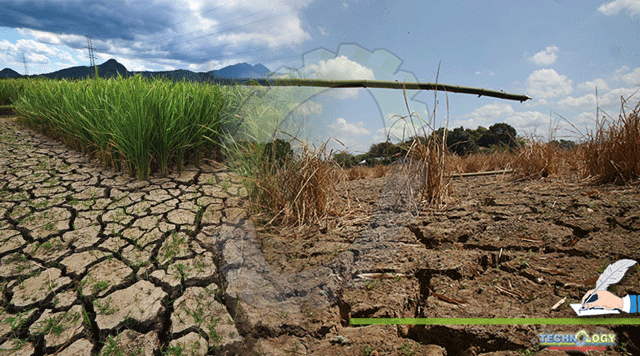More than 1/3 of the world’s inhabitants ingest rice as a principle nutrient meal Chiefly in Asia, it is considering to give about 70-80% everyday calorie to most of individuals. Rice plant has a system of small roots, very slim epidermal wax, and rapid stomata shut-down so it is believed that they can be easily desiccated. The standard harvesting of rice plant by village country man lies between 4-5 tons per hectare.

By Ishrat Fatima
Most of the environmental stresses are responsible for its low production and less turnout. These are the habitual facts that affect crop production and durability in agronomics. The term environmental stress can be divided into two categories described as:
- Stresses because of biotic factors that includes nuisance, bug and infection frequency
- Stresses due to abiotic factors that includes inundation, turbidity, drought, torridity.
The most destructive abiotic factor that cause serious effects on more than 50% of the world’s plough able area is drought.
As of now, there is a shortage of new water, with vegetation representing 65% of worldwide stream utilization. An ideal measure of water needed for water system to create one kilogram of rice was assessed at around three thousand liters. Because of dry season pressure, yield misfortune can ascend to about 100% relying upon the development phase of the plant. Yield misfortunes should be limited to help helpless rice ranchers in agricultural nations and for food maintainability to feed for the developing human populace.
Worldwide, the increment in dry spell seriousness combined with absence of abundant genotypes which are appropriate for development below dry season conditions are the ultimate restricting components answerable for little creation of rice. Rice development is occasional because of an absence of fitting rice cultivars and methods.
Because of the stationary character of plants, the potential outcomes of getting away from the dry season condition are basically hypothetical. Serious dry spell pressure can be harmful to plant advancement at every phase. In the midst of the regenerative development phase, the impacts of water scarcity can prompt male infertility and incipient organism fetus removal not long after fertilization which causes low conceptive accomplishment for some floral breeds. Plant development and advancement are results of genotype, climate or association linking the genotype (hereditary prospect) and climate.
The advancement likewise relies on biological cycles (e.g. photosynthesis) which is associated with the ecological components. When ecological conditions are not exactly the ideal prerequisite, plants become focused and this antagonistically influences their efficiency, development and advancement. There are two sorts of dry spell conditions, named terminal and discontinuous.
Terminal dry spell condition is brought about by a need or decline in water accessible to plants, hence prompting extreme dry spell pressure and the resultant demise of the plant. Notwithstanding, discontinuous dry spell condition prompts trouble in plant development during the time of deficient precipitation or water system, which happens either once or at stretches during the cultivation conditions. Not at all like terminal dry season pressure, are irregular dry spell conditions not typically deadly. Dry season resilience or opposition components rely upon the capacity of plant endurance in keeping up work under terminal and irregular dry season conditions.
Dry spell resilience is characterized as plant resistance under the base degree of dampness content in the cytoplasm when the water content establishes -23% or -0.3 g of the new and dehydrated tissue, individually. Dry spell resistance procedure incorporates cell changes, physiological habituation and phylogenic variations that are constrained by hereditary elements at various phases.
In course of recent many years, the expanding event and consequence of dry season in crop creation have made it a necessary subject of exploration. In investigating dry season reaction in plants, the phase, seriousness, schedule and method of dry season pressure and its event with other abiotic factors, for example, temperature and salt burdens are critical.